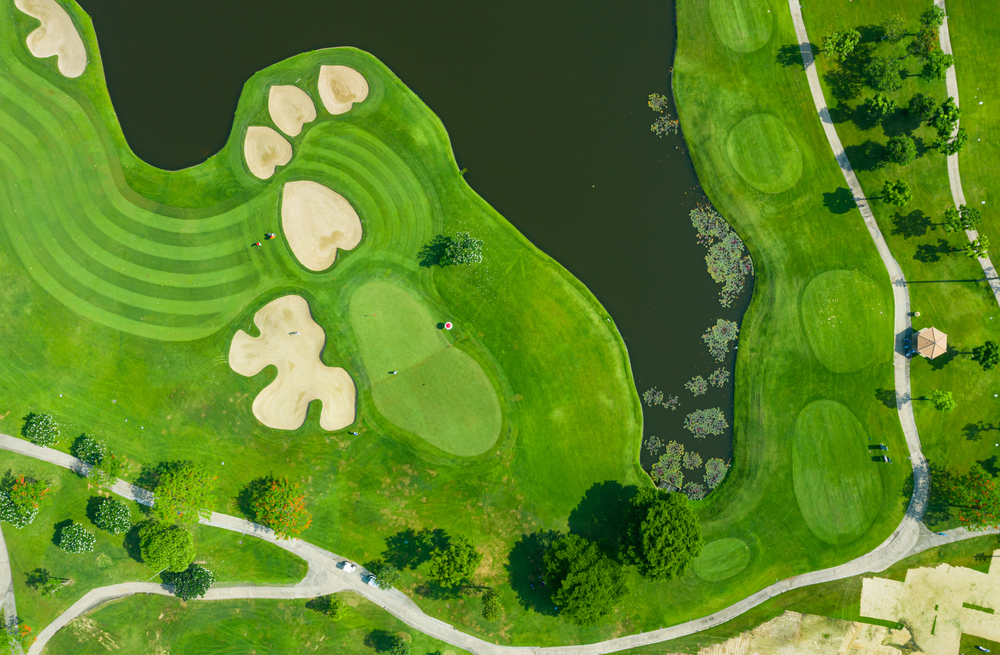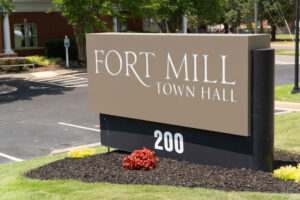Golf course design is an intricate blend of art and science, shaping the landscapes that golfers traverse as they challenge their skills and compete against one another. With roots in Scotland and England, the field has evolved over centuries, creating courses that are as visually stunning as they are strategically engaging. This comprehensive guide will delve into the history, process, and essential elements of golf course design, as well as explore the challenges, technology, and future of this captivating field.
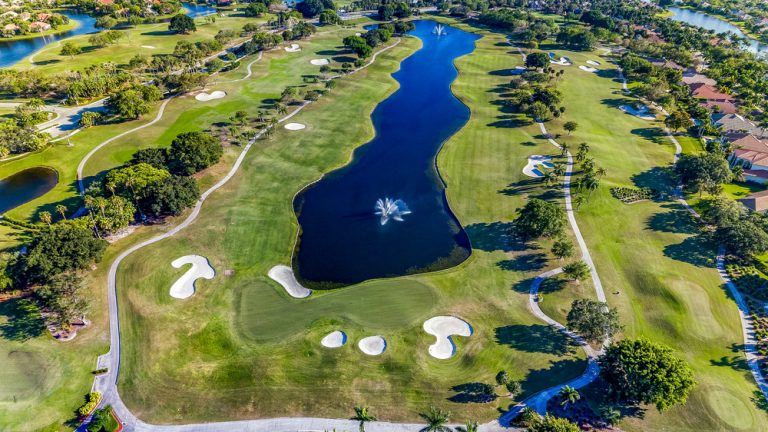
Evolution of Golf Course Design
Early courses in Scotland and England
Golf’s origins can be traced back to 15th-century Scotland, where courses were often laid on natural, rugged landscapes. Early golf courses were characterized by minimal intervention and a strong connection to the land, and many of the first courses in Scotland and England took advantage of coastal sand dunes, known as “links” land. Like the Old Course at St. Andrews, these courses established a precedent for future designs.
The influence of Old Tom Morris and Alister MacKenzie
As golf grew in popularity, so did the need for more structured and intentional course designs. Old Tom Morris, a legendary golfer and course designer, began to shape the field in the late 19th century. His designs, which included Carnoustie, Prestwick, and the expansion of the Old Course at St. Andrews, emphasized strategic play and incorporating natural features.
In the early 20th century, Alister MacKenzie, a British golf course architect, built upon the foundation set by Morris. MacKenzie’s designs, such as Augusta National, Cypress Point, and Royal Melbourne, further emphasized the importance of strategic play, focusing on aesthetic beauty and using natural landforms. He believed a course should be a pleasure to play and visually appealing.
The Golden Age of Golf Course Architecture
The period between the two World Wars saw a surge in golf course development and is now referred to as the Golden Age of Golf Course Architecture. Prolific designers like Donald Ross, Harry Colt, A.W. Tillinghast, and C.B. Macdonald created courses emphasizing strategic play and variety, incorporating different shot values and requiring golfers to use their full skills. Many courses from this era, such as Pinehurst No. 2, Pebble Beach, and Shinnecock Hills, remain highly regarded today.
Modern design trends
In the latter half of the 20th century, golf course design shifted towards a more penal style, characterized by longer courses, narrower fairways, and more hazards. However, the 21st century has seen a resurgence of more strategic, playable designs that prioritize enjoyment and environmental sustainability. Architects like Tom Doak, Bill Coore, and Ben Crenshaw have embraced the minimalist approach, creating courses that blend seamlessly with their natural surroundings and prioritize strategic play.
Sustainable and environmentally friendly designs
Sustainability has become a critical consideration in modern golf course design, as architects aim to minimize course environmental impact while maintaining playability and appeal. This includes using native vegetation, reducing water consumption, and preserving wildlife habitats. Courses like Streamsong Resort in Florida and Bandon Dunes in Oregon exemplify this approach, garnering praise for their environmentally conscious designs.

The Golf Course Design Process
Pre-design stage
Site selection and analysis: Before the design process begins, architects must identify a suitable location for the golf course. This involves analyzing the topography, soil composition, drainage patterns, and natural features of potential sites. The site’s characteristics will heavily influence the design approach and dictate the construction requirements.
Environmental impact assessment: Architects must evaluate the environmental implications of their proposed design. This assessment identifies potential ecological concerns, such as impacts on wildlife habitats, water usage, and erosion control. In many cases, regulatory agencies require an environmental impact assessment before granting construction permits.
Market research and feasibility study: Before committing to a project, it’s essential to understand the local golf market and evaluate the financial viability of the proposed course. This study considers factors such as competition, target demographics, and projected revenues to ensure the golf course will be sustainable and successful.
Design stage
Conceptual design: The conceptual design phase involves creating preliminary sketches and plans that outline the overall vision for the golf course. This includes establishing the course’s routing (the sequence and layout of holes), identifying key features and hazards, and defining the overall aesthetic and strategic themes.
Master planning: Once the conceptual design is in place, architects refine the plans into a more detailed master plan. This plan includes specific hole yardages, green and tee locations, hazard placements, and landscaping features. At this stage, architects also consider infrastructure elements such as clubhouses, maintenance facilities, and parking lots.
Detailed design and construction documents: In the final stage of the design process, architects generate detailed construction documents that provide the technical specifications needed to build the golf course. These documents include grading plans, drainage and irrigation designs, and landscape planting plans.
Construction stage
Earthwork and shaping: The construction phase begins with earthwork and shaping, as crews move and sculpt the land to create the desired contours and features. This stage is critical, as it establishes the foundation for the golf course’s strategic and aesthetic qualities.
Irrigation and drainage systems: Installing effective irrigation and drainage systems is essential for maintaining healthy turf and ensuring the course remains playable in various weather conditions. During construction, crews install underground piping and other components to deliver water to the greens, fairways, and tees while also managing excess moisture.
Turf establishment: Once the earthwork and infrastructure are in place, crews seed or sod the course with the selected turfgrass varieties. Establishing healthy turf requires careful planning and attention to factors such as climate, soil composition, and intended playability.
Post-construction stage
Course grow-in and maintenance: After construction, the golf course enters a grow-in period where the turfgrass and other vegetation mature and establish themselves. During this time, maintenance crews carefully monitor and manage the course’s conditions to ensure optimal growth and playability.
Course opening and marketing: Once the grow-in period is complete, the golf course can open for play. This typically involves marketing efforts to attract golfers and generate interest in the new facility. Opening events, such as a grand opening tournament or a charity fundraiser, can help draw attention to the course.
Continuous improvement and renovation: Golf course design is an ongoing process, and architects often revisit their work to make improvements or address changing needs. Renovations can range from minor tweaks, such as bunker adjustments or tee box expansions, to more substantial overhauls involving the redesign of entire holes or greens.

Essential Elements of Golf Course Design
Routing
Natural features and topography: Successful golf course routing uses the site’s natural features and topography, utilizing the landscape to create visually striking and strategically challenging holes. Architects can minimize earthmoving and create a more sustainable course by working with the land.
Balance and variety in hole layouts: Good routing ensures a balance of hole types, lengths, and directions, creating an engaging experience for golfers. Architects strive to create a mix of par-3, par-4, and par-5 holes, with varying degrees of difficulty and a diverse range of shot requirements.
Optimal flow and sequencing: A well-routed golf course ensures smooth transitions between holes, minimizing walking distances between greens and tees. Proper sequencing also helps manage the play pace and reduces course congestion.
Strategy and playability
Risk-reward opportunities: Strategic golf course design incorporates risk-reward opportunities, where golfers must weigh the benefits of aggressive play against the potential consequences of failure. These elements challenge golfers to decide and execute shots based on their skill levels and course conditions.
Multiple tee placements: Offering multiple tee placements allows golfers of different abilities to enjoy the course and ensures an appropriate level of challenge for all players. Properly placed tees can also help manage play pace and reduce course wear.
Width and angles of approach: A well-designed golf course provides golfers with options for playing each hole, encouraging creativity and strategic thinking. By offering a variety of angles and widths of approach to greens and fairways, architects create a more engaging and enjoyable golf experience.
Aesthetics and visual appeal
Bunkering and hazard placement: Bunkers and hazards play a crucial role in both the strategic and aesthetic aspects of golf course design. Thoughtful placement of these features can create visually striking landscapes while challenging golfers and influencing shot selection.
Landscaping and vegetation: Using native plants and trees can enhance the visual appeal of a golf course and provide important strategic elements. Landscaping can also serve functional purposes, such as providing shade, defining boundaries, or offering habitat for wildlife.
Views and focal points: Great golf course design takes advantage of natural vistas and scenic views, creating memorable experiences for golfers. Focal points, such as water features or distinctive landmarks, can also enhance a course’s visual appeal and identity.

Designing for Different Types of Golf Courses
Links courses:
Traditional links courses are found along coastal dunes and feature firm, fast-playing turf and undulating terrain. These courses often have few trees and rely on natural landforms, such as dunes, to create challenge and interest. Famous examples include the Old Course at St. Andrews and Royal County Down.
Parkland courses:
Parkland courses are typically found in inland settings and are characterized by tree-lined fairways, lush landscaping, and well-manicured playing surfaces. These courses often incorporate water features and emphasize strategic placement of hazards. Renowned parkland courses include Augusta National and Baltusrol Golf Club.
Desert courses:
Desert courses are built in arid environments and emphasize the stark beauty of the desert landscape. These courses often feature limited turf areas, rocky outcroppings, and native vegetation. Notable examples include TPC Scottsdale and Shadow Creek Golf Course.
Mountain courses:
Mountain courses take advantage of dramatic elevation changes and panoramic views. These courses often feature steep slopes, uneven lies, and dramatic changes in elevation from tee to green. Prominent examples include Banff Springs Golf Course and Kapalua Plantation Course.
Tropical courses:
Tropical courses are situated in warm, lush environments and often feature palm trees, water hazards, and vibrant flora. These courses provide a unique aesthetic and challenge, with notable examples such as Teeth of the Dog in the Dominican Republic and Bali National Golf Club in Indonesia

Challenges and Considerations in Golf Course Design
Environmental concerns
Water usage and conservation: Golf courses can require significant amounts of water for irrigation, making water conservation a critical issue in many regions. Architects must design courses with efficient irrigation systems and utilize drought-tolerant turfgrasses adapted to local conditions.
Wildlife habitat preservation: Golf course construction can disrupt natural habitats, making preserving and protecting wildlife in the design process essential. Incorporating buffer zones, wildlife corridors, and natural habitats into the course layout can help mitigate these impacts.
Erosion and sediment control: Erosion and sedimentation can negatively impact water quality and aquatic habitats. Architects must employ best management practices, such as silt fencing, sediment ponds, and vegetative buffers, to control erosion and protect water resources during construction and operation.
Financial and operational considerations
Cost of construction and maintenance: Golf course construction and maintenance can be costly. Architects must balance the desire for unique and challenging features with the need for cost-effective and maintainable designs.
Return on investment: Golf course owners and operators seek to maximize their return on investment. Architects must consider factors such as market demand, competition, and operational efficiency when designing courses to ensure financial sustainability.
Balancing playability and difficulty for diverse skill levels: A successful golf course must cater to golfers of all skill levels, providing an appropriate challenge while maintaining enjoyment and playability. Architects must thoughtfully design features and hazards that challenge better players without overly penalizing less skilled golfers.
Accessibility and inclusivity
Universal design principles: Architects should incorporate universal design principles to make golf courses more accessible and enjoyable for players of all abilities, including those with disabilities. This can include features such as accessible pathways, adaptable tee placements, and unobstructed course views.
Accommodating golfers with disabilities: Golf courses should be designed to accommodate players with disabilities, including mobility impairments, visual impairments, and cognitive disabilities. This may involve providing adaptive equipment, accessible facilities, and staff training to support inclusive play.
Encouraging youth and beginner golfers: To grow the game and attract new players, golf courses should be designed to keep youth and beginner golfers in mind. This can include incorporating shorter tees, wider fairways, and fewer penal hazards to make the game more approachable and enjoyable for newcomers.
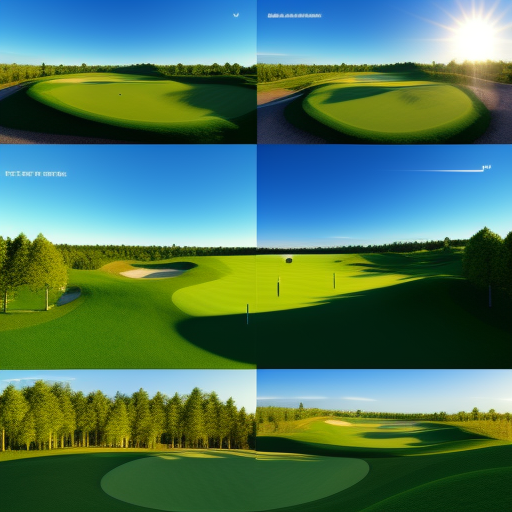
The Role of Technology in Golf Course Design
Computer-aided design (CAD) software
CAD software enables architects to create precise and detailed plans, visualize designs in 3D, and easily make adjustments to their layouts. This technology streamlines the design process and improves communication between architects, clients, and contractors.
GPS and drone-based site analysis
GPS and drone technology allow architects to accurately map and analyze site topography, vegetation, and drainage patterns. This information is invaluable in creating designs that work harmoniously with the existing landscape and minimize environmental impacts.
Virtual reality and simulation tools
Virtual reality and simulation tools enable architects and clients to experience proposed designs in an immersive and interactive environment. This technology allows for better understanding of design concepts, improved decision-making, and more efficient design iterations.
Data-driven decision-making
Architects are increasingly using data analytics to inform their designs, analyzing factors such as player preferences, pace of play, and course maintenance requirements. By incorporating data-driven insights, architects can create more effective and efficient designs that cater to the needs of their target audience and optimize operational performance.
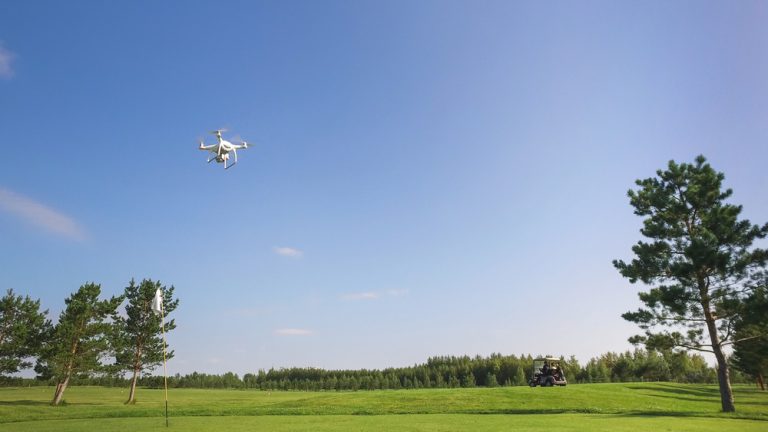
The Future of Golf Course Design
Adapting to climate change and resource scarcity
As climate change and resource scarcity become increasingly pressing concerns, architects must design golf courses that are resilient and sustainable. This may involve utilizing drought-tolerant turfgrasses, employing water-efficient irrigation systems, and creating designs that can withstand extreme weather events.
Innovations in turfgrass management
Advances in turfgrass management, such as developing new grass varieties and improved maintenance techniques, will continue to shape golf course design. These innovations can help courses achieve better playing conditions, reduced water usage, and lower maintenance costs.
The rise of alternative golf formats and facilities
Architects must be prepared to design alternative golf formats and facilities as the golf industry evolves, such as shorter courses, practice facilities, and non-traditional golf experiences. These offerings can attract new players and cater to the changing preferences of golfers.
The potential impact of technology and automation
Emerging technologies like robotic mowers and autonomous maintenance equipment may reshape the golf course design process by altering maintenance requirements and operational efficiencies. Architects must stay informed of these developments and adapt their designs accordingly.

Golf course design is a continually evolving field, driven by changing golfer preferences, technological advancements, and environmental concerns. Architects must stay informed of these trends and adapt their designs to meet the needs of the modern golfer.
As the golf industry faces increasing environmental and financial pressures, architects must prioritize sustainable and efficient design practices. Thoughtful golf course design can create memorable experiences for players while minimizing environmental impacts and ensuring long-term financial viability.
Great golf course design has the power to inspire and challenge golfers, creating memorable experiences that foster a lifelong passion for the game. Through innovative and thoughtful design, architects can leave a lasting legacy that shapes the future of golf.

